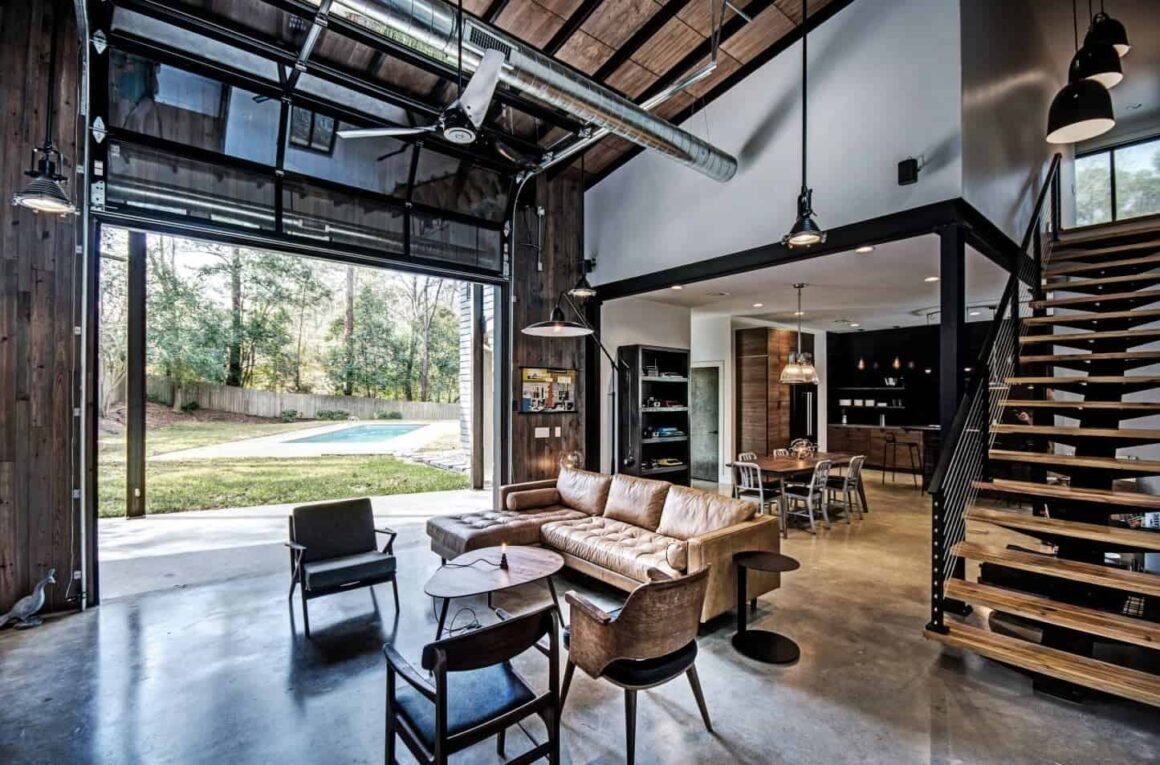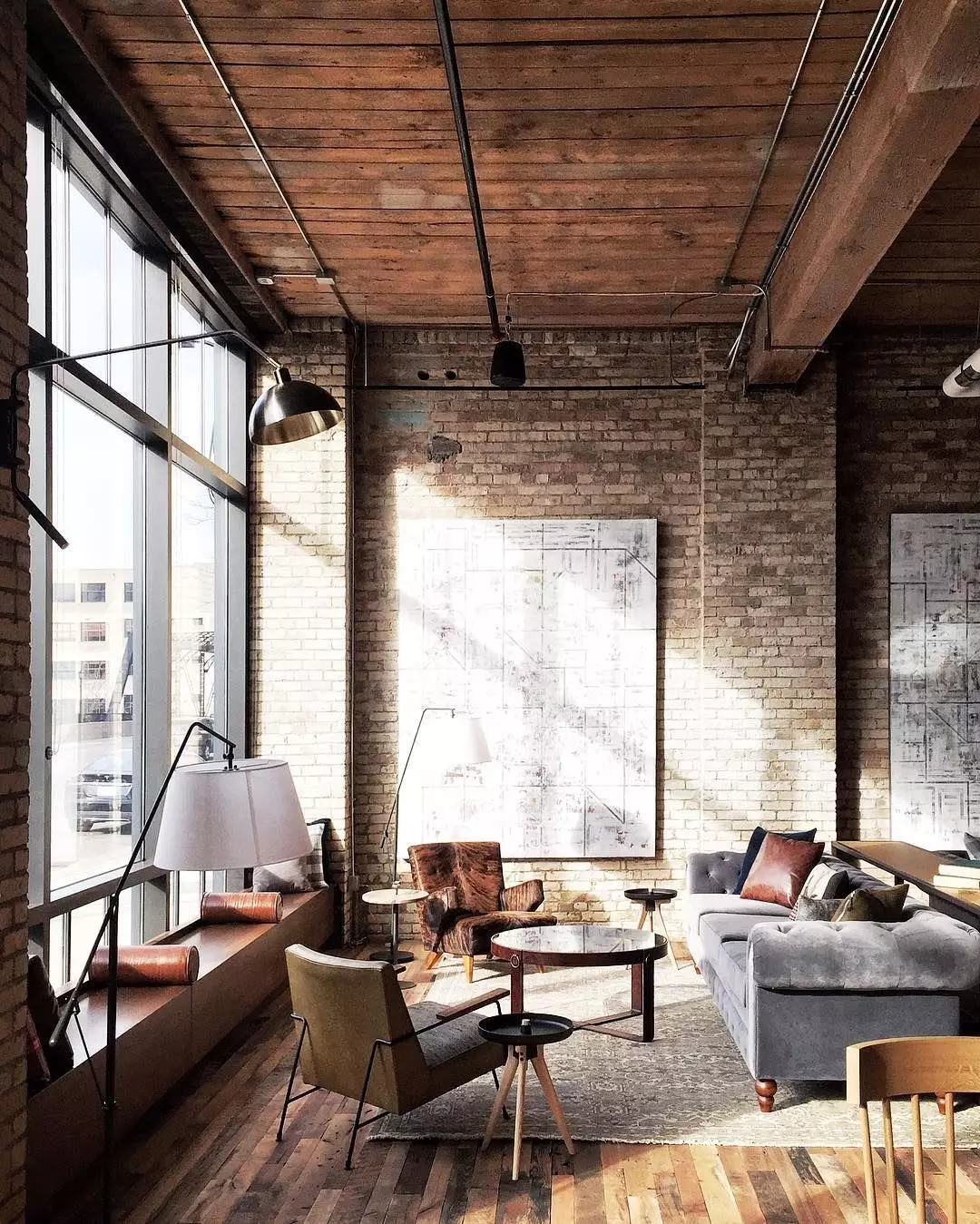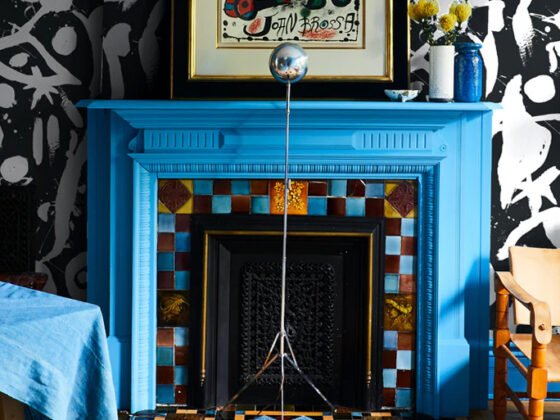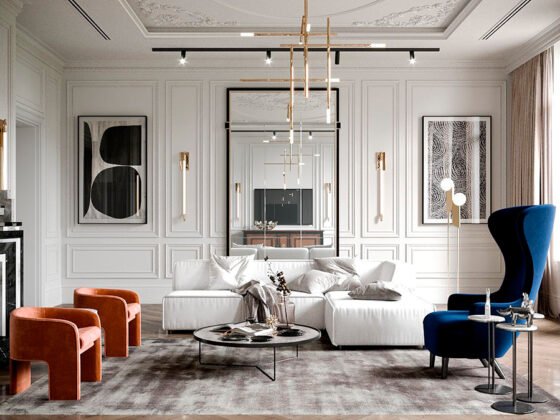Industrial interior design, a style born from repurposed factories and warehouses, has surged in popularity in last decade. This unique and captivating design aesthetic seamlessly marries the raw, utilitarian elements of industrial spaces with a touch of elegance and sophistication. Let’s explore its origins, key elements, and how to infuse your space with this distinctive style.
Industrial interior design draws inspiration from the transformation of former industrial spaces into residential or commercial environments. These spaces, often factories, warehouses, and mills, were repurposed and converted into chic, urban living areas in the mid-20th century. The design style emerged as a tribute to these industrial roots, embracing exposed structural elements and materials to create an edgy yet refined ambiance.

Key Elements of Industrial Interior Design
- Exposed Structural Elements: The hallmark of industrial design is the exposure of structural components. This includes raw brick walls, steel beams, concrete floors, and ductwork. These elements are celebrated rather than concealed, imparting an unmistakable industrial vibe to the space.
- Raw Materials: Industrial interiors showcase raw and weathered materials. Wood, metal, and concrete are the primary materials of choice. Reclaimed wood and distressed metals are often used for furniture and decor, adding to the rustic charm.
- Neutral Color Palette: Industrial design typically favors a neutral color palette. Gray, black, white, and earthy tones dominate the color scheme. These hues create a sense of simplicity and allow the materials and furnishings to take center stage.
- Open Spaces: Industrial design often emphasizes open and uncluttered spaces. The layout is minimalistic, with a focus on functionality and flow. Large, open windows or glass partitions are also common, allowing ample natural light to penetrate the space.
- Vintage and Repurposed Furnishings: A hallmark of industrial interior design is the use of vintage or repurposed furnishings. These pieces often have an aged, well-worn appearance, adding character and history to the space. Reclaimed factory carts, vintage leather sofas, and industrial light fixtures are popular choices.
- Utilitarian Decor: Industrial spaces often feature decor items with a utilitarian or mechanical aesthetic. For instance, vintage factory equipment, gears, pulleys, and cogs may be repurposed as art or functional decor pieces. This nod to machinery and technology reinforces the industrial theme.
- Industrial Lighting: Lighting is a critical element in industrial design. Oversized, metal pendant lights, Edison bulbs, and exposed wire fixtures are frequently used to create a moody, ambient atmosphere.
- Artistic Expression: Industrial design encourages creative expression through art. Large, abstract pieces, graffiti-style murals, or industrial-themed artworks often adorn the walls. These artworks add a touch of contemporary urban artistry to the space.

A large part of the distinctive look of the industrial style comes from its use of two materials – wood and metal. Exposed pipes, ducts, wiring, etc., are common metal elements; tables, counters, cabinets, etc., are obvious choices for wood elements. After all, the magic is all in the details.
Avoid overcrowding for that essential industrial interior design. Fundamentally, industrial décor champions minimalism and functionality. Every element within the space should have a defined purpose, leaving no room for excess or purely decorative items. This minimalistic approach extends to accessories like throws, pillows, and knick-knacks, which are replaced by an intentional selection of bold accents such as striking artworks and distinctive lighting fixtures.

Industrial interior design offers a captivating blend of raw aesthetics and refined elegance. With its homage to the industrial past, this design style has the power to transform any space into a unique, urban sanctuary. By embracing exposed structural elements, raw materials, and vintage furnishings, you can create an industrial-inspired interior that exudes character, creativity, and a sense of history.










